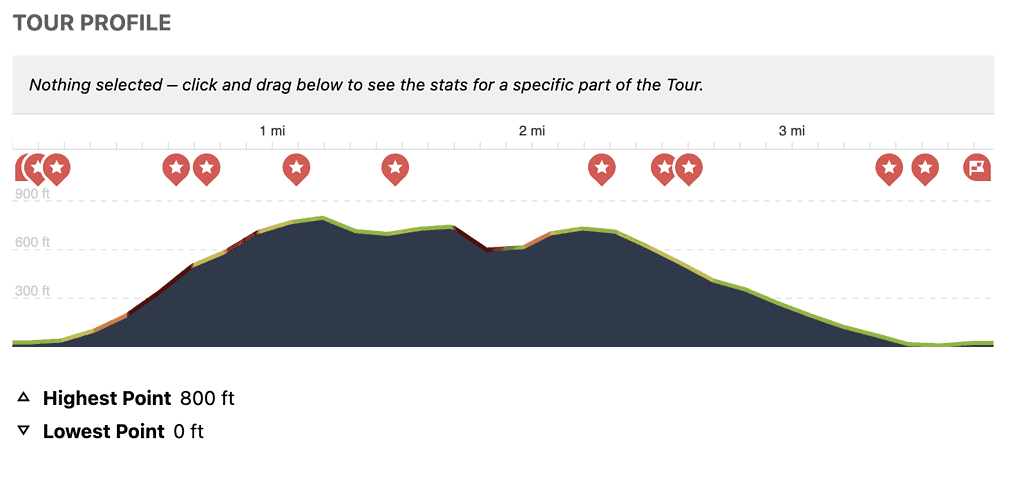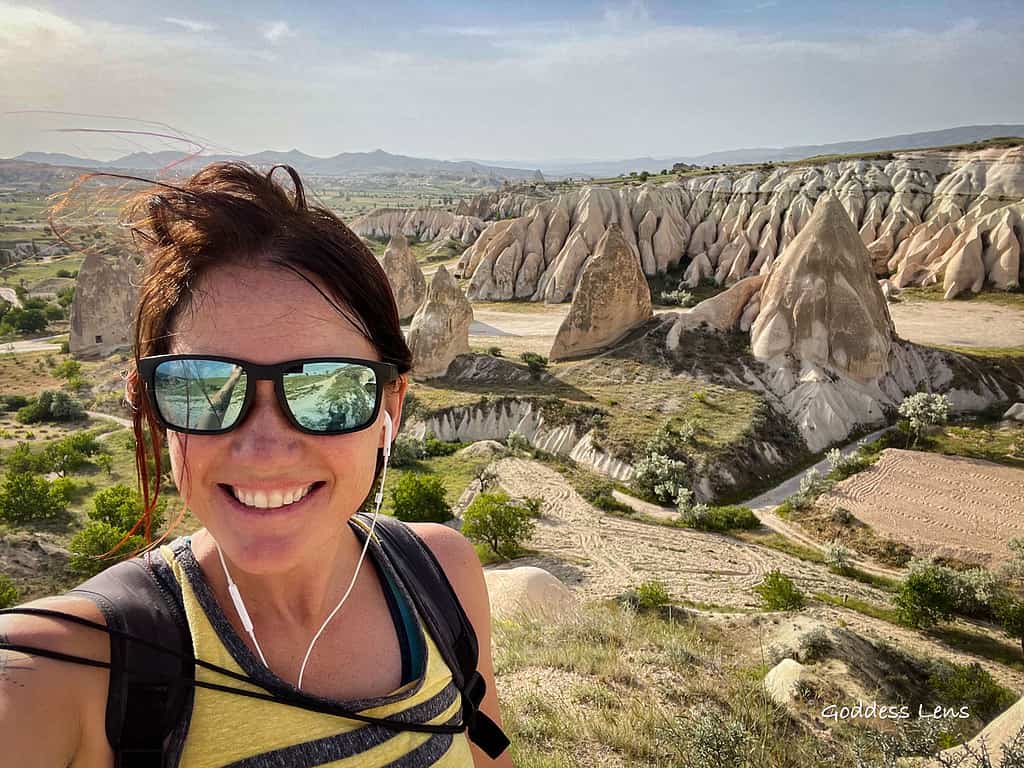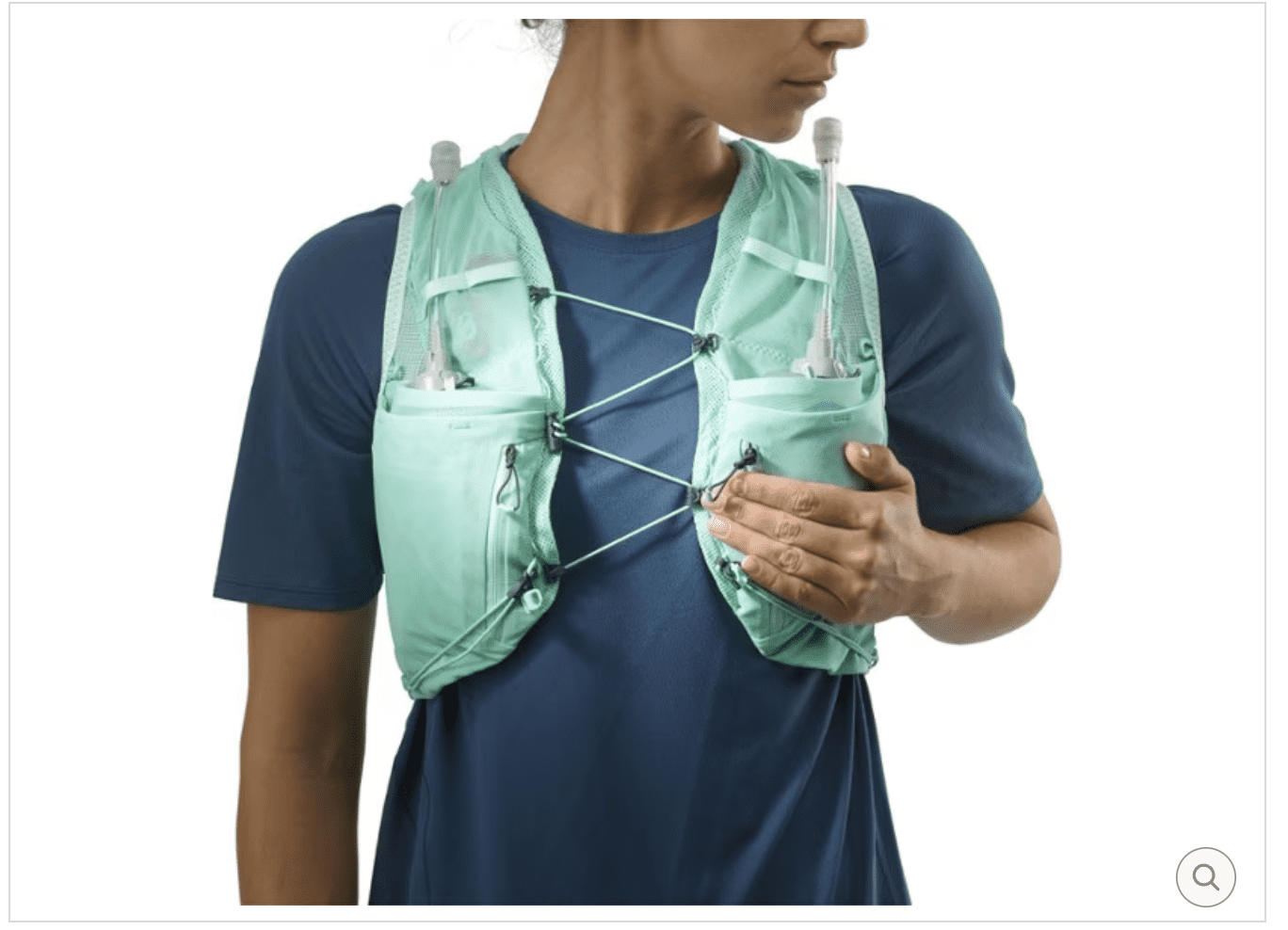
How to Estimate the Time You Need for a Successful 3 Mile Hike with My Table Based on Hiking Fitness Level
Today, we’ll be answering a common question among hikers: How long does it typically take to complete a 3-mile hike?
As a physical therapist and someone who’s spent a decent amount of time hiking, I totally get the struggle of trying to estimate how long a hike will take, especially when I’m constantly stopping to take pictures of every single wildflower. I mean, they’re all unique and beautiful, right?
But don’t worry, my fellow hikers, because I’m here to give you the inside scoop on how long it really takes to conquer a 3-mile hike and some great hiking safety tips. So grab your backpack, put on those hiking boots, and get ready to join me on this adventure!
🥾😓 Feeling Overwhelmed Planning a Hike? Use my custom-built online Hiking Time Calculator for Non-techie People.
Oh, and stick around until the end because I’ve got a bonus treat for you: my minimalist gear guide for hiking.
What You Will Learn
How long does it take to hike 3 miles?
An average hiker can cover 2-3 miles in an hour. If you’re climbing, add another 15-30 minutes for every 500 feet of elevation gain. How long does it take to walk 3 miles depends on the terrain and fitness level of the hiker.
So, if you’re planning on hiking 3 miles, it would take around 1-1.5 hours. Keep that in mind when planning your hiking trip and don’t forget to plan some stops for food and fun!
Estimate of Time it Takes to Hike 3 Miles
Beach Bum Pace vs Speed Demon Hiker: How long does it take to hike 3 miles
Here’s a table with the columns arranged in the order of Beginner, Average, and Fit Hiker, pick where you think you are and go from there. Write down how you do with each trail so you’ll be able to gauge your future hikes without worry.
| Factor | Beginner Hiker (mph) | Beginner Hiker Time Estimate (Hours) | Average Hiker (mph) | Average Hiker Time Estimate (Hours) | Fit Hiker (mph) | Fit Hiker Time Estimate (Hours) |
|---|---|---|---|---|---|---|
| Base Time | 2 mph | 1.5 hours | 3 mph | 1 hour | 4 mph | .75 hours |
| Elevation Gain | +1 hour per 2,000 ft | +1 hour | +1 hour per 2,000 ft | +1 hour | +1 hour per 2,000 ft | +1 hour |
| Trail Conditions | +1 hour per mile | +1 hour | +1 hour per mile | +1 hour | +1 hour per mile | +1 hour |
| Personal Factors | +/- additional time | +/- additional time | +/- additional time | +/- additional time | +/- additional time | +/- additional time |
Short on Time? Quick Links
Related Reading:
What Influences Speed on a Hike?
Elevation Gain
When it comes to hiking, “Elevation Gain” is just a fancy way of saying you’re either going uphill or downhill. And for us wiser, more experienced hikers (ahem, older folks), going downhill can actually be slower than flat terrain.
Don’t believe me? Check out any hiking app, and you’ll see a graph that outlines the ups and downs of your trail.
Take this 3-mile hike in Montenegro, for example. Starting at sea level, it climbs 800 ft, and then drops back down another 800 ft. It’s a wild ride, but hey, that’s just how we like it!
It took me 3 hours, but I had to stop at the shepherd hut on top to eat the local cheese and wine. Well, the many cats of Kotor stole it from me while I was taking a photo of Boka Bay. There aren’t many rules for hiking, but keeping your cheese away from the cats is one of them. Fortunately I was able to get another piece and it was delicious!
You’ve got to love Montenegro!!!

Trail Conditions
The conditions of the trail can have a significant impact on your hiking speed, even if there aren’t any steep hills to conquer. Uneven surfaces, wet and slippery paths can all slow you down. It’s important to note that trail guides can be inconsistent and unreliable when it comes to rating difficulty.
Hiking trail levels are often categorized into black (severe), red (moderate), and blue/green (easy), similar to ski resorts. However, I’ve found that these categorizations aren’t always accurate.
Personal Factors EPP (Eat, Potty, Pictures)

Let’s face it, when you’re out in nature, it’s hard to resist the urge to snap a few photos of the breathtaking scenery. And let’s not forget about those necessary pit stops that come with being human.
That’s why personal factors can play a big role in how long it takes to hike 7 miles. So, be sure to factor in some extra time for capturing those Instagram-worthy shots and answering nature’s call.
And hey, who knows, you might even stumble upon some hidden gems along the way that are worth slowing down for.
How long does it take an average person to hike 3 miles?
Let’s face it – there’s no one-size-fits-all answer to this question. The time it takes to hike 3 miles can vary greatly depending on several factors, such as terrain, elevation gain, and your fitness level. That being said, there are some general estimates we can use as a starting point.
For a BEGINNER HIKER on relatively flat terrain, 3 miles may take anywhere from 1.5-2 hours.
On the other hand, an experienced hiker on a challenging trail with significant elevation gain could take 2-3 hours or more. It’s important to note that these estimates are just rough guides and may not reflect your own personal hiking pace.
To get a better idea of how long it might take you to hike 3 miles, consider factors such as your average hiking speed, rest breaks, and potential obstacles on the trail.
Read on to the end where I share an online hiking calculator that can help calculate your estimated hiking time based on distance and elevation gain.
Remember, hiking is not a race, and it’s important to pace yourself to avoid injury or exhaustion. It’s better to take your time and enjoy the journey rather than pushing yourself too hard and risking injury.
Naismith’s Rule for Estimating How Long it Takes to Hike
Start with Base Estimate of 3 Miles Per Hour on “Average”
Naismith’s Rule for a 3-mile hike:
| Factors That Influence Time Needed | Time Estimate (Hours) |
|---|---|
| Base Time (3 mph) | 1 hour |
| Elevation Gain (2000 ft) | +1 hour |
| Trail Conditions (How Clear is the Path) | +1 hour |
| Personal Factors – Do you like to take photos, eat or toliet? – Probably | +/- additional time |
- We are assuming 3 mph for an average hiker
- If you are a beginner give yourself a 2 mph speed
- If you are a fit hiker assume 4 mph
Elevation Gain, Trail Conditions, Personal Factors
- Assume an extra 1 hour per 2,000 feet of elevation gain. On average you go slightly faster downhill than uphill so consider your route.
- Consider your trail conditions. Is the path flat, rocky, cleared of plants and overgrowth? If not, give yourself an extra hour for the trail
- Personal Factors will play into your overall hiking time. Most people like to eat and go to the bathroom over the course of 15 miles, so keep watch of your time.
How Much Water Should You Bring
Staying hydrated is crucial for hiking safely. You should plan to drink at least 1 liter of water every 2 hours of hiking. Bring at least 4 liters of water for a 15-mile hike, and adjust accordingly based on temperature, humidity, and individual factors.
How far is 3 miles? About 1-1.5 liters of water!
💦 Need to bring water on the trail? Consider bringing a reusable water bottle, water filtration system, water bladder for your backpack or purification tablets.
How Many Calories Does Hiking Burn?
It depends on fitness level and Metabolic Equivalent Task (MET Value)…
The best part of hiking vacations?? More room for yummy food like octopus confit like on the Fisherman’s Trail in Portugal!
Hiking is not just a fun adventure but also a workout that can help you burn a lot of calories. And let’s be real, one of the best reasons to go on a hiking vacation is the extra room for yummy food like octopus confit on the Fisherman’s Trail in Portugal!
To figure out how many calories you can burn while hiking, you’ll need to calculate your Metabolic Equivalent Task (MET) value. Different activities are assigned different MET values to indicate the rate at which they burn calories.
The more challenging the activity, the higher the MET value. To estimate the calories burned, multiply the MET value by your weight in pounds, multiplied by 0.4536 (conversion factor from pounds to kilograms), and the duration of the activity in hours. Keep in mind that this is just an estimate as there are many factors at play.
How Your Body Burns Calories by Activity
Broken into Weight Classes of people who are 120lb, 150 lb, and 180lbs.
| Activity | MET Value |
|---|---|
| Hiking General | 4.5 |
| Backpacking | 7.0 |
| Resting | 1.0 |
| Climbing Hills | 6.0 |
| Climbing Hills with 0-9 lb load | 7.5 |
| Climbing Hills with 21-42 lb load | 9.5 |
😓 Tip: If your knees are like mine and require some TLC a set of hiking poles can really help. Read my review of the best trekking poles based on my experience as a hiker and physical therapist.
How to Hike Faster?
Hiking faster is a great goal, but it’s important to do it safely to avoid injury and other health problems. How long it takes to hike 3 miles will greatly be affected by injury, so keep yourself safe.
Tips to increase your hiking speed while minimizing risks:
- Warm-up and Stretching: Prepare your muscles with warm-up and stretching exercises
- Increase Your Endurance: Start with shorter hikes and gradually increase distance and pace over time
- Focus on Proper Technique: Pay attention to posture, foot placement, and balance, especially on uneven terrain
- Use Trekking Poles: Maintain balance, reduce stress on joints, and increase speed
- Take Short Breaks: Rest and hydrate, listen to your body
- Build Lower Body Strength: Improve leg strength and speed to hike faster
- Hydrate and Fuel Properly: Drink plenty of water and electrolyte drinks, pack snacks like nuts, energy bars, and fruits.
⭐️ A hydration vest can be very handy for longer hikes and doubles as a strength training device on shorter hikes. Read my full review.
By following these tips, you can increase your hiking speed safely and enjoyably. Remember to always prioritize safety and listen to your body to avoid pushing yourself too hard.
Salomon Adv Skin 12 W Set Hydration Vest - Women's
Benefits of using hydration packs vs standard weighted vests for hiking training include:
- More adjustable straps
- Multiple sizes to ensure snug fit
- Women-centric sizing
- Designed not to bounce
- Less pressure on shoulder blades and collar bones
- Many colors to choose
Comes with 12 liters of capacity. 2 water bottles on front to even out the weight. Multiple pockets, straps and hooks. The water bladder reservoir holds 1.5 liters.
You can attach trekking poles to the bottom of the pack.
Between water weight and additional weight you add into the rear pocket - it's possible to train comfortably with 20-25 lbs with this multi-functional weighted water vest.
Recommended Resources Including a Hiking Time Calculator
- If you are embarking on a multi-day hiking adventure, check out my minimalist guide to packing for hut to hut hiking trips. You definitely want to take less, rather than more.
- My favorite headlamp and portable battery charger in case I can’t make it back before sunset.
- Learn How long does it take to hike 4 miles?
- Why not go hiking in a dress?
- Hiking with plantar fasciitis or hiking with sore calves.
What should I take on a 3 mile hike?
Hiking backpack
Weather-appropriate clothing (think moisture-wicking and layers)
Hiking boots or shoes
Plenty of food
Plenty of water
Navigation tools such as a map and compass.
First-aid kit
Knife or multi-tool
Is a 3 miles hike a good workout?
Hiking isn’t just a great way to connect with nature, it’s also a fantastic workout with numerous health benefits. By traversing up and down hills, you can get your heart pumping and achieve a great cardio workout.
Not only is hiking a cardio workout, but it’s also a weight-bearing exercise that builds muscle mass and helps prevent osteoporosis. Plus, it’s a joint-friendly exercise that keeps arthritis sufferers limber and mobile.
The benefits of hiking go beyond just physical health. Being outdoors in the sunshine provides your body with vitamin D, which is essential for many bodily functions.
Additionally, hiking offers psychological benefits, such as enhancing your well-being and contributing to feelings of relaxation.
Looking for the perfect gift for the Outdoorsy Lady in your life? 42 Gifts for Outdoorsy Women that Inspire Wonder – 2023 Gift Guide

Author profile: Morgan Fielder is a Doctor of Physical Therapy and passionate hiker who believes in exploring the world on foot with good food. Follow her journey as she shares science-based hiking tips and advocates for sustainable tourism.

